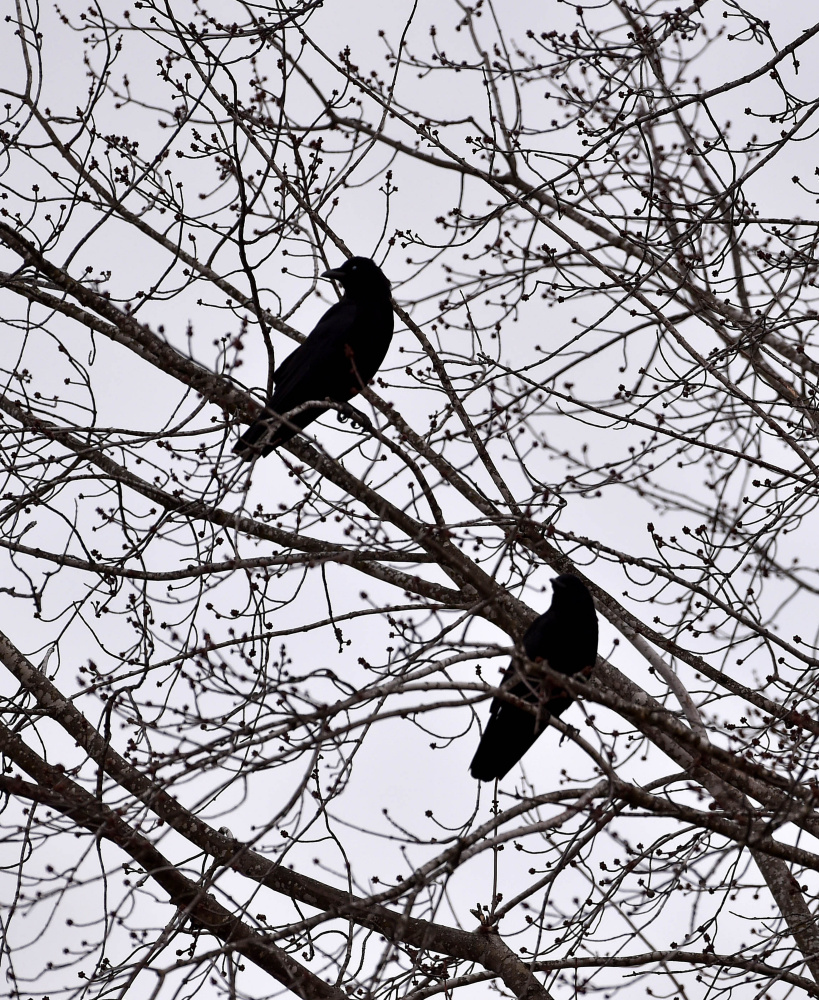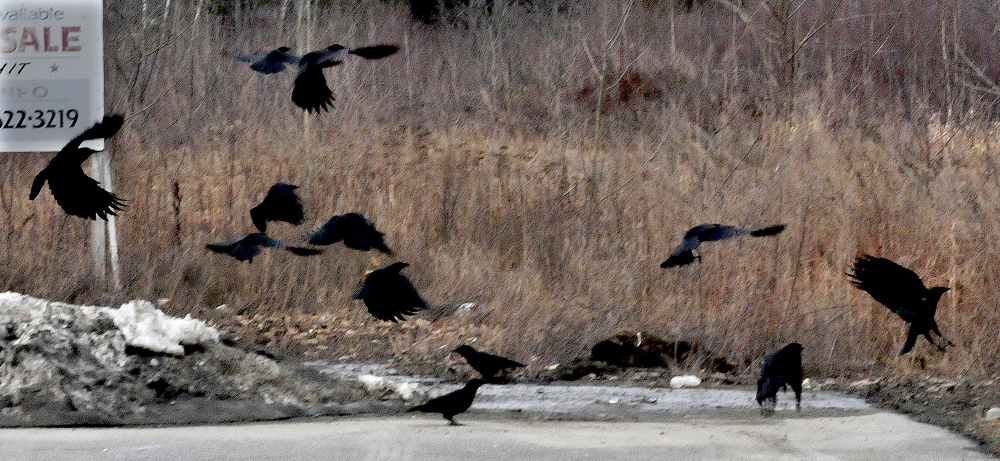WATERVILLE — When the winter sun sets, the sky over certain areas of the city darken with swarms of hundreds upon hundreds of crows, gathering together for their nightly roost.
Huge flocks, thousands of crows at a time, collect together in tree stands and on utility poles. From afar, a casual observer could be excused for mistaking the dark bodies for dead leaves or clumps of sticks lodged in the branches.
But then there’s also a cacophony of cawing and frequently the clatter of hundreds of sets of wings settling into branches, and those exposed to it may feel as though they’ve been dropped into a scene from Alfred Hitchcock’s movie “The Birds.”
“It is an amazing phenomenon,” said Kevin McGowan, a crow expert with the Cornell Lab of Ornithology at Cornell University.
Starting in late autumn, groups of crows start to gather for a winter roost. Those numbers gradually swell as crows migrating from farther north add to their numbers until huge groups come together.
The roosts start to break up around this time of year – mid-to-late March – as the birds move away to get ready for mating season.
Waterville city officials haven’t had many complaints from people about the birds, although city workers did have to pressure-wash the sidewalk and benches in Castonguay Square this past week after crows left droppings all over the property, City Manager Mike Roy said.
The crows also are known to swoop down onto trash left on the curb, pecking through the plastic and strewing garbage on lawns and sidewalks.
Herb Wilson, a biology professor at Colby College in Waterville, said there hasn’t been a count of the Waterville roost, but it could number as many as 10,000 birds. Roosts in other parts of the country easily reach 50,000 birds, and the largest roost recorded was 2 million.
The flock that roosts in the Waterville area typically stays near the city’s north side – around Elm Plaza, Industrial Road, Colby College and Quarry Road – while venturing down the Main Street and Kennebec River corridors, sometimes encircling the downtown.
According to McGowan, the birds don’t stay in the same place every night, but they do stay in the same general area. Some crow populations use the same roosts for years at a time.
On winter evenings, it is common to see waves of hundreds of crows in flight, heading back from their foraging territory as far as 25 miles away to the safety of the communal roost. As the sun goes down, crows group themselves in larger and larger assortments before finally coming together. In the morning, the pattern is reversed.
Scientists think the primary reason crows group together like that is because of the threat from great horned owls, the birds’ biggest predator next to humans.
“That’s kind of the default explanation for why you have birds flocking together,” said Doug Hitchcox, a staff naturalist for Maine Audubon. “The more eyes looking, the … higher the detection rate for predators is going to be.”
Aside from Waterville, large groups of crows are typically found in Brewer and Portland, but roosts are common throughout Maine. Plenty of other bird species flock together for night roosts, but crows are noteworthy because they are so large, Hitchcox said. “When you see thousands of large birds, you tend to take notice,” he said.
Send questions/comments to the editors.





Success. Please wait for the page to reload. If the page does not reload within 5 seconds, please refresh the page.
Enter your email and password to access comments.
Hi, to comment on stories you must . This profile is in addition to your subscription and website login.
Already have a commenting profile? .
Invalid username/password.
Please check your email to confirm and complete your registration.
Only subscribers are eligible to post comments. Please subscribe or login first for digital access. Here’s why.
Use the form below to reset your password. When you've submitted your account email, we will send an email with a reset code.